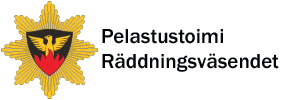

Fire safety systems installed in buildings
Fire safety systems installed in buildings
Fire safety systems, such as fire detectors and automatic fire extinguishing systems, are usually installed in buildings based on legislation, such as building regulations and building permit procedure. The Rescue Act provides for the installation of smoke detectors and the marking and illumination of the escape routes of buildings.
Fire detectors and automatic fire extinguishing systems are part of the building’s safety solution
Fire detector refers to a device installed in a building that detects an incipient-stage fire, signals a local alarm of the fire and transmits notice of the fire either to the Emergency Response Centre (ERC) or to another control location.
Automatic fire suppression system refers to a system that detects a fire and either extinguishes it in its incipient stage or keeps it under control until it can be extinguished. Sprinkler systems are typical automatic fire extinguishing systems.
Fire detectors and automatic fire extinguishing systems are designed and installed on a site-by-site basis so that they work as intended and are compatible with other systems in the building. European standards or design rules based on them are usually used in the implementation of such systems. Fire detectors and automatic fire extinguishing systems are installed and maintained by installation companies in the register of the Finnish Safety and Chemicals Agency Tukes.
Operability to be ensured throughout life cycle
The inspection body inspects fire detectors and automatic fire extinguishing systems before their commissioning and at regular intervals thereafter.
A fire alarm system and an automatic extinguishing system must undergo a periodic inspection every three years. However, the first inspection of a new system must be conducted within 12–18 months after verification inspection.
The aim of the inspections is to ensure that the systems are in working order. The rescue authority monitors compliance with the obligation to maintain and inspect the systems.


